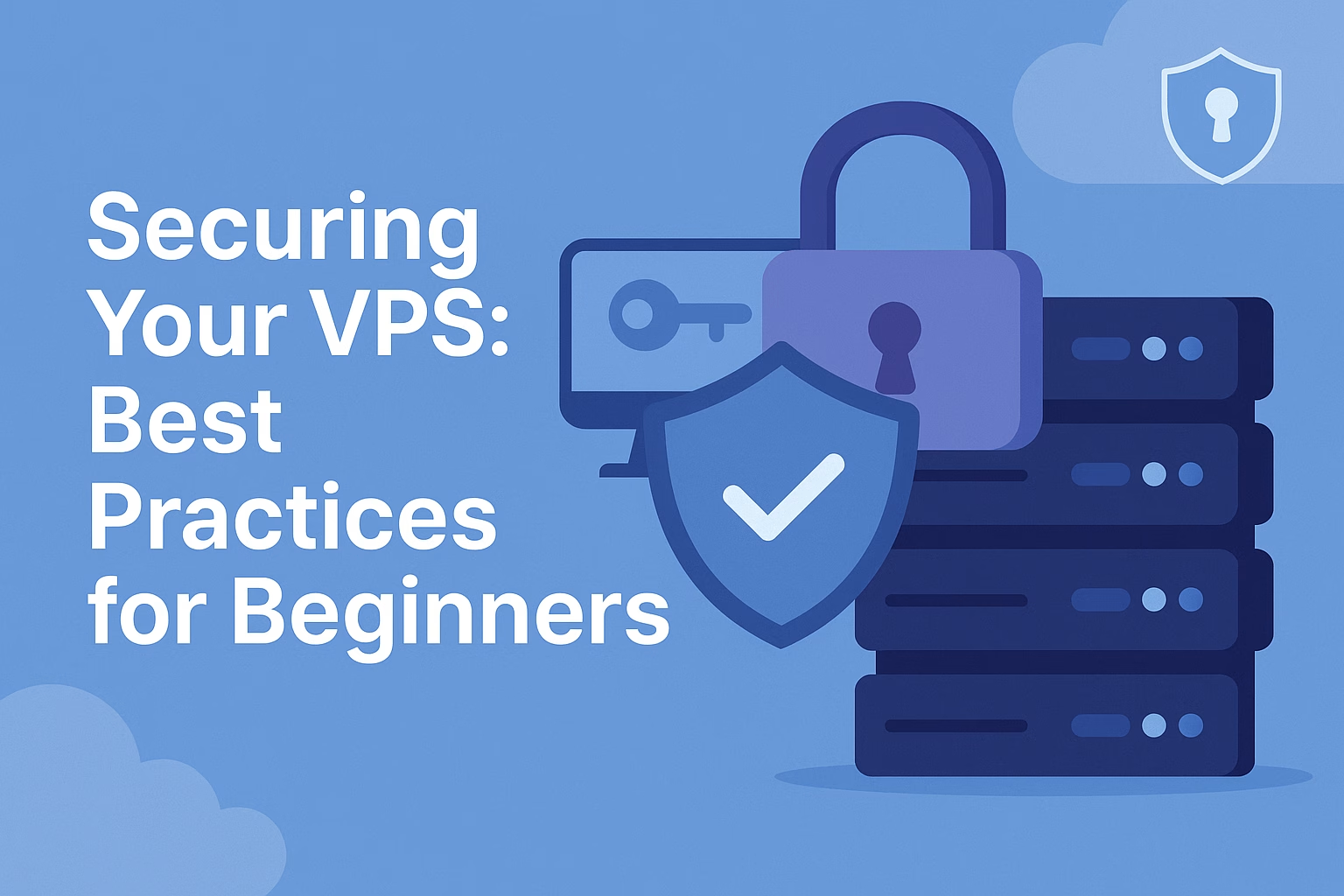When you buy a VPS, you’re not just renting space on a server—you’re also taking responsibility for its security.
If your VPS is left unprotected, it becomes an easy target for bots, brute-force attacks, or even malware.
But don’t worry: securing a VPS isn’t as scary as it sounds.
Here are 7 beginner-friendly best practices to help you keep your virtual server safe—whether you’re hosting a website, app, or mail server.
✅ 1. Update Your System Immediately
Right after you log in, run a full system update:
# Ubuntu/Debian
sudo apt update && sudo apt upgrade -y
# AlmaLinux/CentOS
sudo dnf update -y
🛡️ Why? Many attacks exploit known OS vulnerabilities. Updates patch those holes.
🔐 2. Harden SSH Access
SSH is your remote gateway to the server—so protect it well:
-
✅ Change the default port (from 22 to something else)
-
✅ Disable root login via SSH
-
✅ Create a new user with
sudoprivileges -
✅ Use SSH key authentication instead of passwords
adduser youruser
usermod -aG wheel youruser # AlmaLinux/CentOS
Bonus: Use tools like Fail2Ban to block repeated login attempts automatically.
🔥 3. Install a Firewall
A firewall limits access only to essential services.
Options:
-
UFW – Simple and recommended for Ubuntu/Debian:
bashsudo ufw allow OpenSSH
sudo ufw enable
-
firewalld – Powerful, used in AlmaLinux/RHEL
-
CSF – Advanced, often used with cPanel servers
Block everything by default—then allow only what you need.
🧪 4. Use Strong, Unique Passwords
Avoid using simple passwords like admin123 or yourdomain@2025.
Instead:
-
Use at least 12–16 characters
-
Include uppercase, lowercase, numbers, and symbols
-
Use a password manager to store them securely
If you’re using key-based SSH login, you can even disable password login entirely.
🐛 5. Install Security Tools
Some beginner-friendly tools to improve your security:
-
Fail2Ban – Bans IPs after multiple failed login attempts
-
ClamAV – Free antivirus/malware scanner
-
Imunify360 (available via PLiKhost) – Advanced AI-powered security for web servers
-
rkhunter – Checks for rootkits and suspicious behavior
💾 6. Enable Backups
No matter how secure your VPS is, accidents happen.
Use:
-
Manual
rsyncortarbackups -
Scheduled cron jobs
-
Remote backup options (PLiKhost offers this!)
-
Backup your website, database, config files, and email regularly
A backup is your last line of defense when things go wrong.
🔍 7. Monitor Your VPS Regularly
Watch for:
-
Unusual logins
-
High CPU or bandwidth usage
-
Unexpected processes
Use tools like:
-
htop,top,netstat -
Netdata (real-time performance monitoring)
-
Email alerts for login, uptime, or file changes
Set it up once and get peace of mind forever.
🟢 PLiKhost Can Help
At PLiKhost, we provide:
-
✅ SSD-based VPS with root access
-
✅ Remote backup options
-
✅ Optional Imunify360 for advanced protection
-
✅ Optional Managed VPS plans (we handle security for you)
-
✅ Friendly support in Bahasa Indonesia & English
Final Thoughts
A VPS gives you power and flexibility—but with great power comes great responsibility.
Start with these beginner best practices to harden your VPS and protect your project from day one.
🟢 Explore PLiKhost VPS Hosting
Need help with setup or security? We’re ready to assist.






